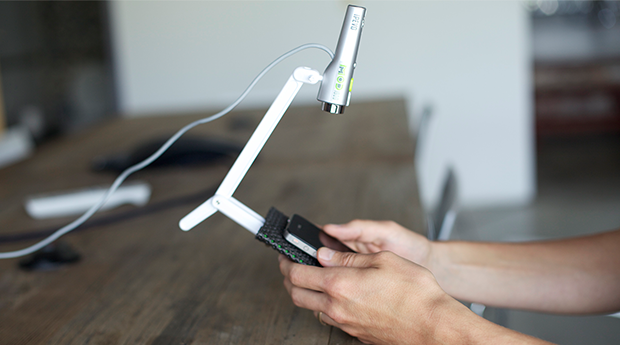Applying Human-Centered Design to Complex Interactive Experiences

The world is becoming increasingly complex. There are more platforms, more devices, and more complexity than ever. Today’s digital interfaces aren’t as self evident as yesterday’s mechanical ones and, with more choices than ever, people won’t tolerate interfaces that aren’t elegant and intuitive. They’ll just go elsewhere for a better solution to their problems.
That’s why we need Human-Centered Design.
By understanding the needs, wants, perceptions and aspirations of our users, we can build better experiences.
While there are no shortcuts to building great experiences, here are a few small steps you can take toward humanizing your design process.
Building your team.
One of the most important and often overlooked elements of a design project is effectively aligning your team around the mission.
I’ve written about Task Cohesion before and nowhere is its presence more important than at the beginning of the design process. You have to inspire each member of your team (and client stakeholders) to take ownership, not just of creating beautiful visual elements or exciting features, but of building an amazing experience for the end user.
Help them understand the “why” behind the mission and how each task builds toward a common and worthwhile goal.
Don’t confuse customer research with science.
If there’s no research, it’s not human-centered. But customer research doesn’t have to be quantitative and scientific in scope. It’s not meant to survive academic review, expand the world’s knowledge, or be published in a journal. It’s meant to help you understand your users. The goal is to do just enough research to make a great product and build empathy.
A handful of qualitative interviews with individual users is the easiest way to uncover insights. You don’t need many. Interviewing more than 10 users of any type will result in diminishing returns.
Listen carefully, but realize that people often can’t predict what they want because they rarely understand their own motives.
Understand constraints.
Design doesn’t happen without constraints. Create user stories and use cases to narrow the scope of what is possible. If you don’t understand constraints early you’ll end up compromising later. Compromise is the enemy of good design.
Move to high fidelity prototypes as soon possible.
In today’s world the idea of a web page is obsolete. We’re not creating pages. We’re designing experiences. Think in terms of flow, not pages.
And avoid Lorem Ipsum as much as possible. It’s lazy and it often means you’re not really thinking about content. You’re just filling space.
If you don’t have content – write it. It may not be perfect, but it’ll be more realistic than Lorem Ipsum.
The closer your prototypes are to the end product, the better.
Avoid throwaway deliverables.
Build your wireframes in HTML. Axure and other wireframing tools are great, but they’re dead ends. You spend weeks and months building wireframes as a deliverable but, when done, they’re set aside and forgotten. You’re no further along in the process than if you’d done detailed paper prototyping.
Instead, create wireframes in HTML. That way your development team can actually leverage the work you created as the project moves forward. HTML wireframes are also easier to make responsive.
That doesn’t mean you should skip “design” – instead you should start even earlier in the process. You should strive to nail down as much of the design as possible before you start wireframing.
A page of grey boxes and Lorem Ipsum isn’t a prototype. It’s a waste of time.
Attack your work.
Even after all of your hard work is done, it’s possible that you slipped up somewhere along the way. Embrace this. Rigorously test your designs with real users. Give them tasks and watch as they try to complete them.
But remember – it’s not the user’s responsibility to build a great product. It’s yours. They’ll only help you identify hurdles. Not make it better.
It’s your responsibility to attack your work and seek areas to improve the experience. Don’t just QA functionality. Rather, strive to make the entire experience better. Content, design, flow – nothing should be sacred. If it means tearing your work apart to make it better, so be it.
The truth is there are a lot of things you won’t notice until you actually see the final product, and that’s okay.
If you’re not saying, “how could this be better” two weeks prior to launch then you’re not trying hard enough. This is your last chance to really improve things. Make the most of it.
Great design is not about aesthetics. But beauty never hurts.
There’s still a myth that design is about aesthetics. Too often this leads to a focus on visual trends. Whether flat design today, hipster logos 3 years ago, or skeuomorphic design 5 years ago – the trends will always change. What’s popular today is rarely fashionable tomorrow.
Great design, however, is timeless. It’s timeless because it does at least one of three things: it speaks to the heart, it changes behaviors, or it changes minds.
If your product does one of these three things, it will last longer and be more effective than any trend-driven exercise in aesthetics.

Comments
Add A Commenttldr